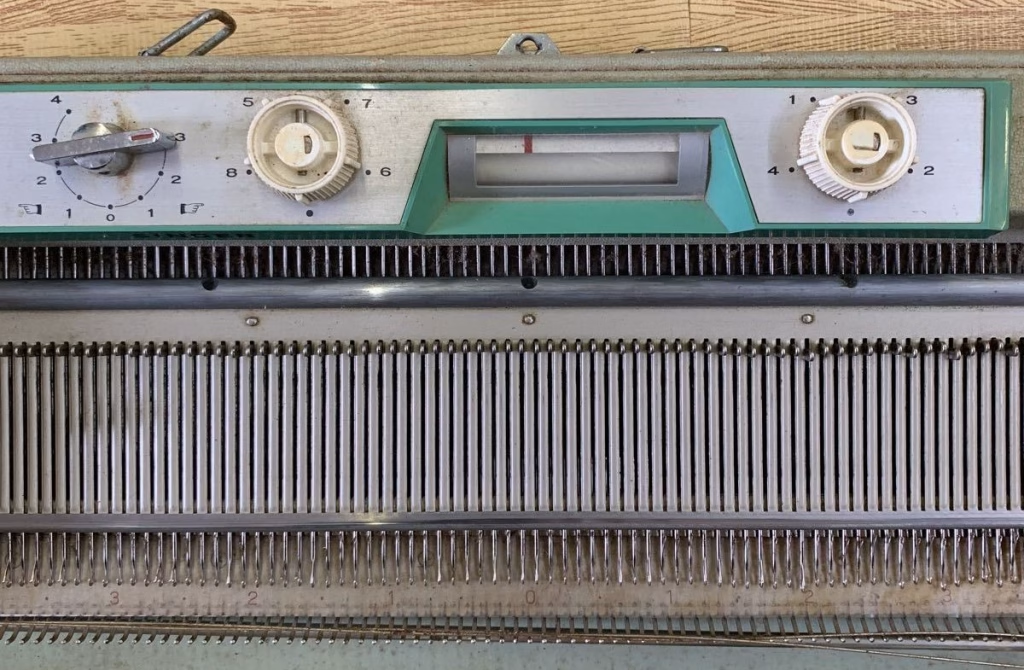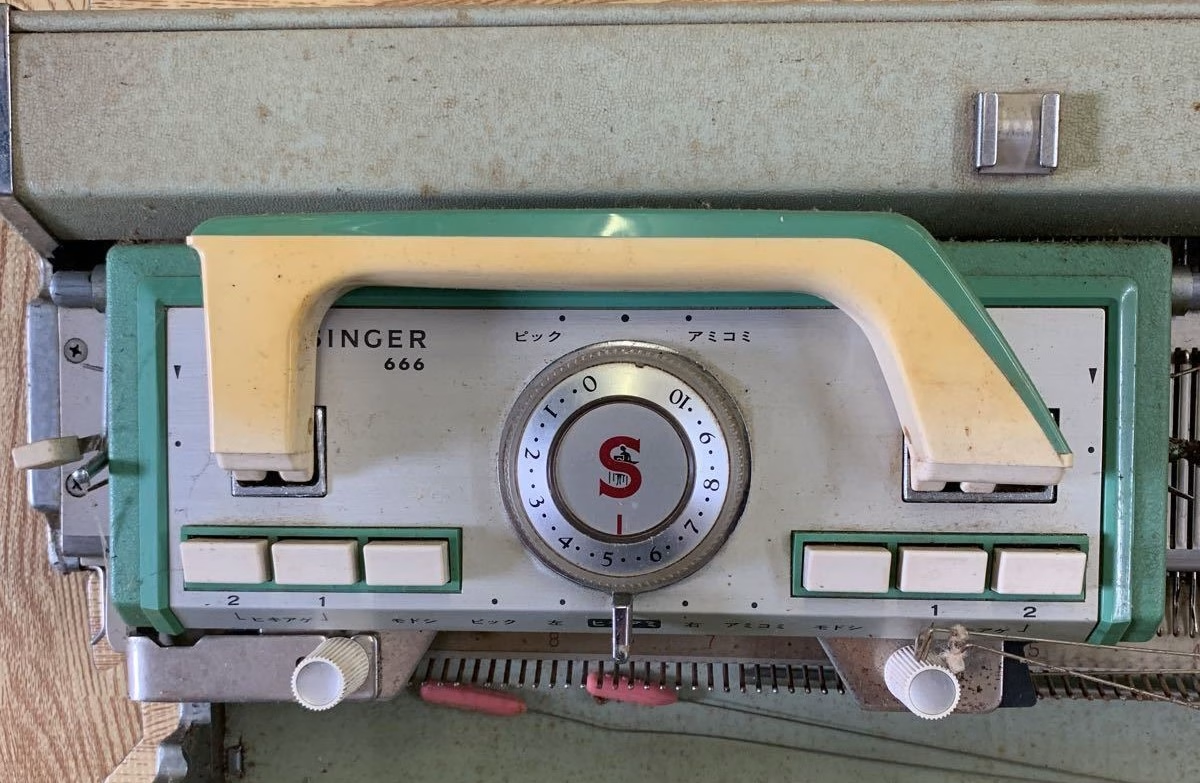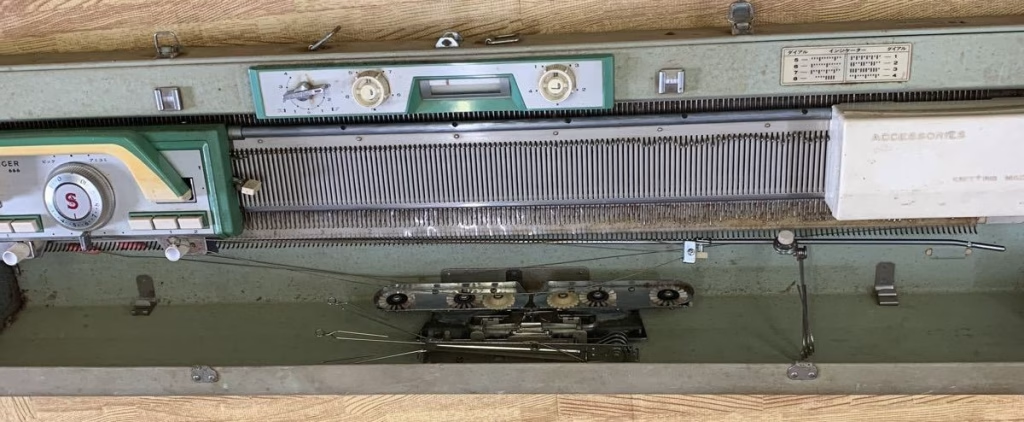
… in progress as I am currently refurbishing one.
Except for the color scheme and the name, Singer 666 knitting machine is identical to the Silver SK-301 knitting machine model with its round radio-button-like turn knob knobs, three-color mast, and dial indicator on the right-hand side of the needle bed.
Both Singer 666 and Silver SK-301 have all metal end caps (unlike it later counterparts, listed at the end, which have plastic, but super sturdy, end caps). Metal end-caps is a huge advantage when shipping these machines because they do not break (just maybe bend) as plastic ones do. But they probably make the machine heavier.
Talking about end caps: they are much harder to remove (for example for deep cleaning, or for servicing) than in similar later models. There are not service manuals so pretty much I had to figure out on the fly how to remove the machine from the case and not to loose bunch of hardware.
Notice an ergonomic design of the foldable carriage handle.
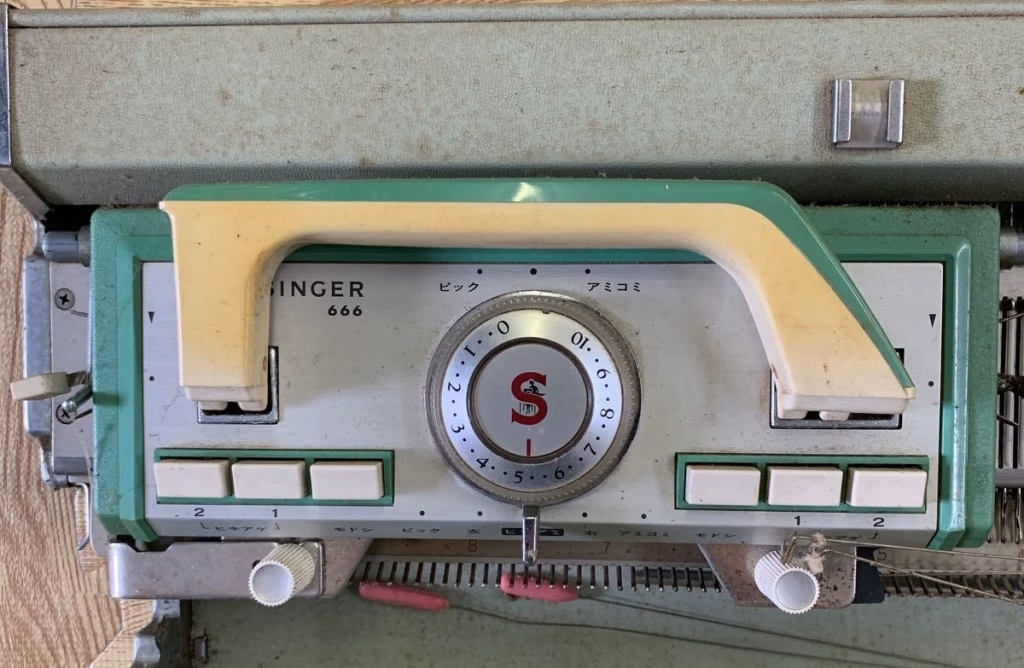
Thus, read the corresponding post about Silver SK-301 while enjoying the pictures of Singer 666 below. If you are looking for a manual, there is a free on available online for Silver SK-301.
Despite vintage features (clip-on round row counter and S-shaped table clamps), the carriage handle folds and the carriage itself selects the needles – which is typical for Singer/Silver Reed/Studio knitting machines, unlike Brother machines, where the needles are selected by the plates).
Sinker plate is a bit larger
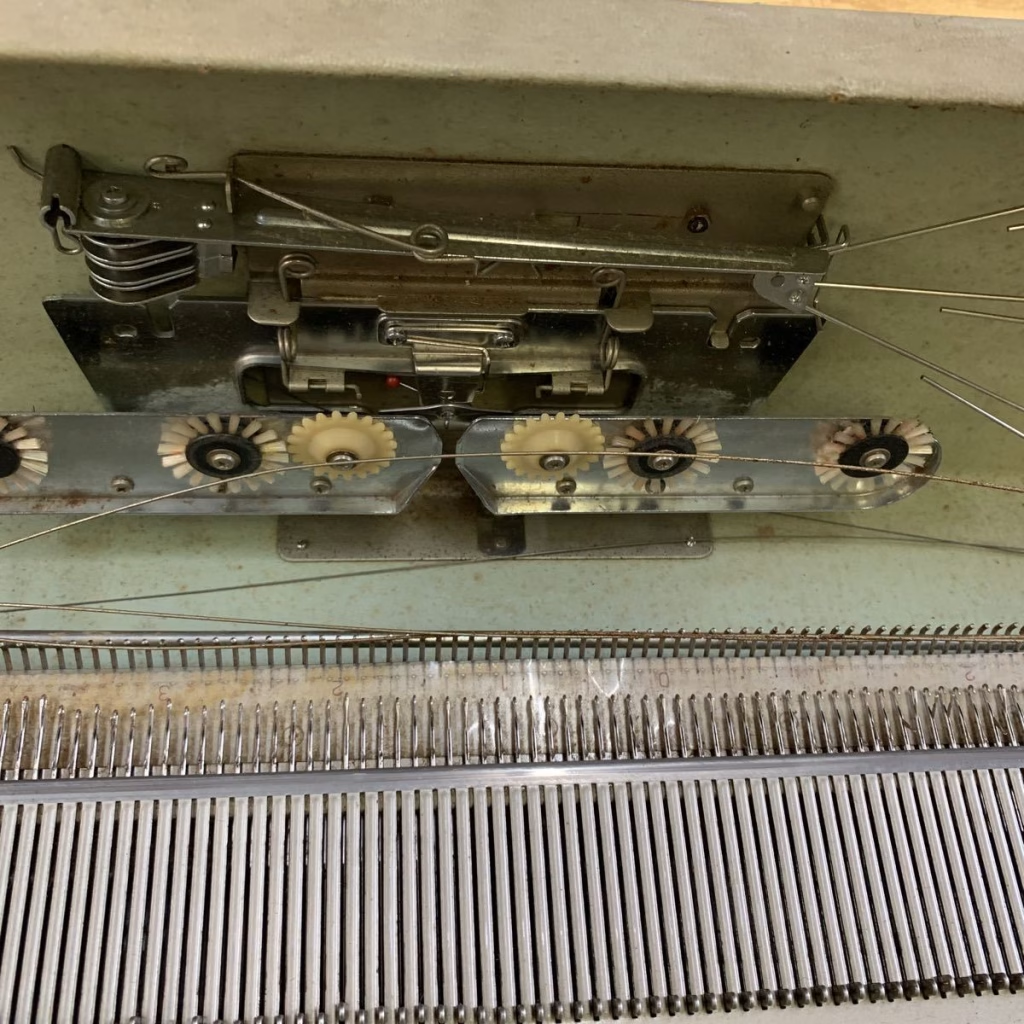
PROS:
- light weight
- compact
- easy to disassemble and remove from its case
- end end caps are easy to remove from the needlebed and are attached to the main bed by metal hardware
- needles similar to the ribber (easy to find)
- The carriage is very easy to remove from the needlebed if it is jammed
- manual and pattern cards are available online for free
- sturdy end caps
- excellent for those who like the satisfaction of manual stitch manipulations
- excellent for beginners
- no ratchet tool is required to move the needles forward (like in Brother push-button machines)
- it is significantly faster to perform needle selection than manually and than the Brother pushbutton knitting machines (which involves the lever movement every time the needles need to be brought forward)
- needle selection pattern versus turn knob combinations is shown on the front panel: no need to constantly refer to the manual
- ribbers were available to convert Singer 666 into a double-bed machine
- metal end-caps, which will not break (but might just bent) when the machine is dropped (for example, during shipment)
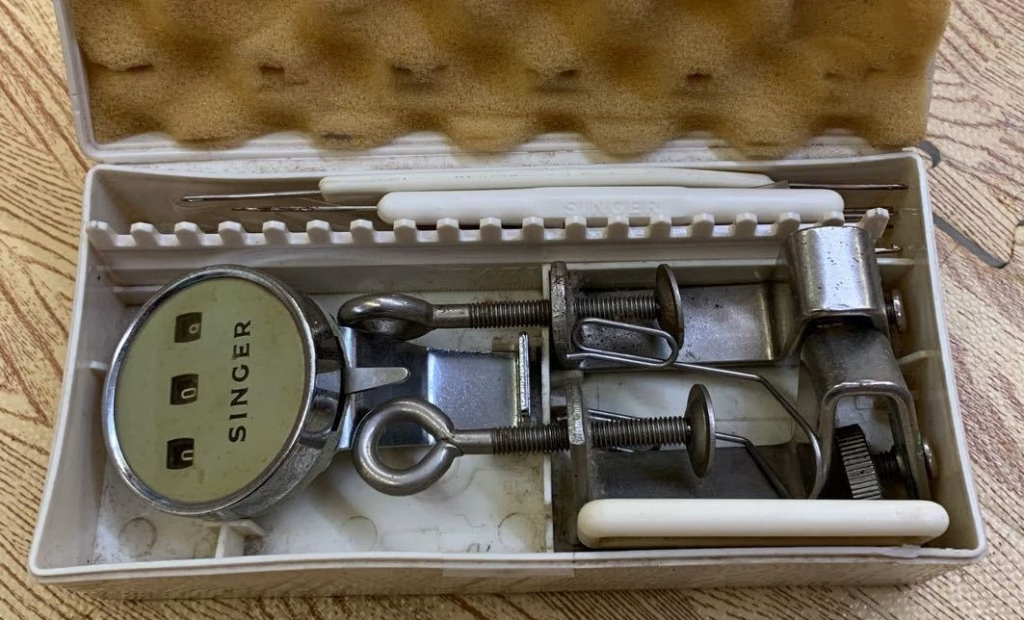
CONS:
- bunch of knobs, buttons and levers might at first seem confusing
- vintage row counter if mispalced is hard to find
- somewhat limited patterning capabilities: manual needle selection is needed for complex patterns and patterns with more than 8 needle repetition
- colored fair isle requires manual yarn manipulation (the knitted will need to lay the yarn onto the needles with open latches; might seem tedious on larger projects but makes it easy to knit single motif patterns)
- limited number of add-ons: only ribber (no knit leaders, no color changers, no lace carriages, etc).
- replacement parts (row counter, sinker plate) might be hard to find if the machine came without them. Only some parts are interchangible with similar turn-knob models.
- might be a bit heavier than its later counter parts that have plastic end caps
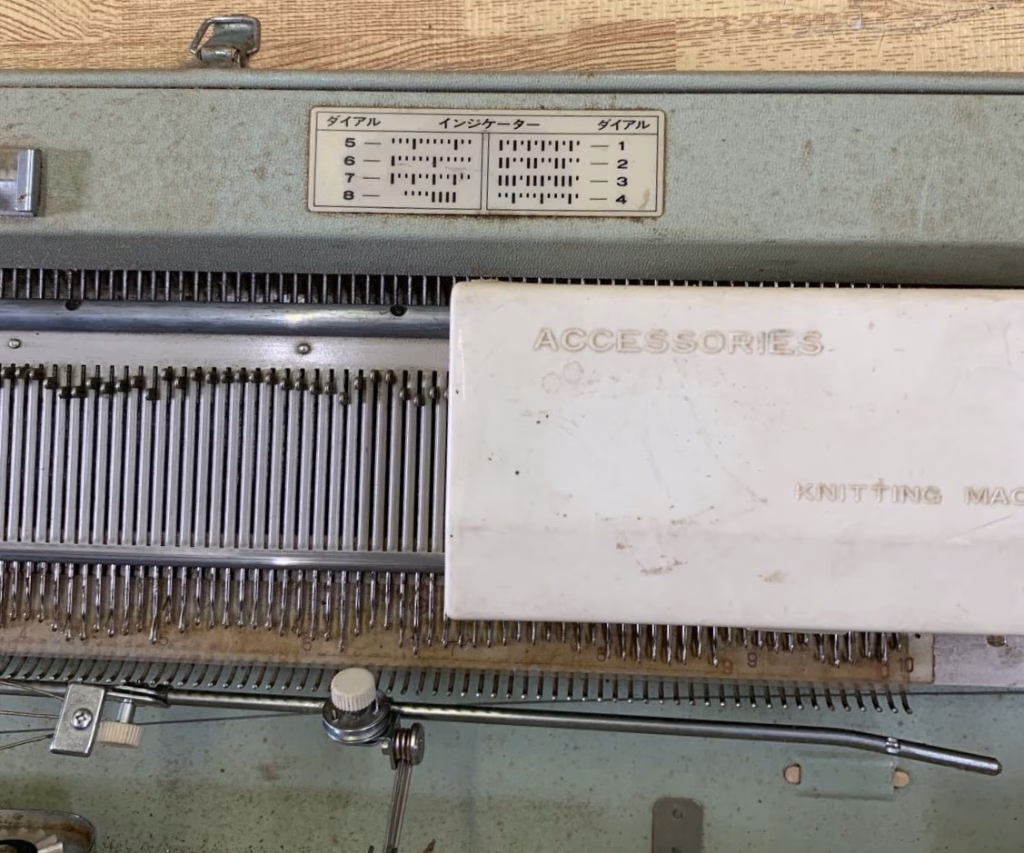
Other and similar turn-knob machines are Knitmaster ES-302, Knitmaster mod. 305, Riccar RK-601, Silver SK-302, Silver SK-303, Silver SK-305, Studio SK-301, and Studio SK-303. Despite similarity, Singer 666 has somewhat vintage features. For example, it has a tension mast capable of handling three thread at the same time. However, sinker plate for Singer 888 and Studio SK303 does not fit Singer 666 (this one is wider).
